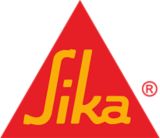
Vapor Retarder TA 138
Torch applied SBS modified bitumen polyester reinforced vapor retarder
Vapor Retarder TA 138 is a 138 mil (3.5 mm) thick torch applied SBS modified bitumen polyester reinforced vapor retarder for use within Sarnafil® and Sikaplan® roofing systems. Vapor Retarder TA 138 can also be used as temporary roof protection. It can be left exposed for up to six (6) months.
- Robust vapor retarder with durable weathering surface that allows for exposure for up to six (6) months
- Torch application allows for installation without low temperature restrictions
- Fine mineral aggregate (sand) topside accepts approved urethane adhesives for insulation or membrane attachment
